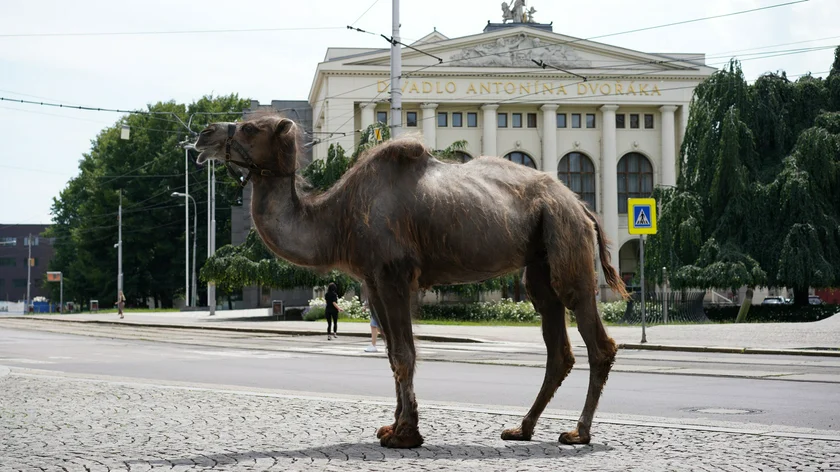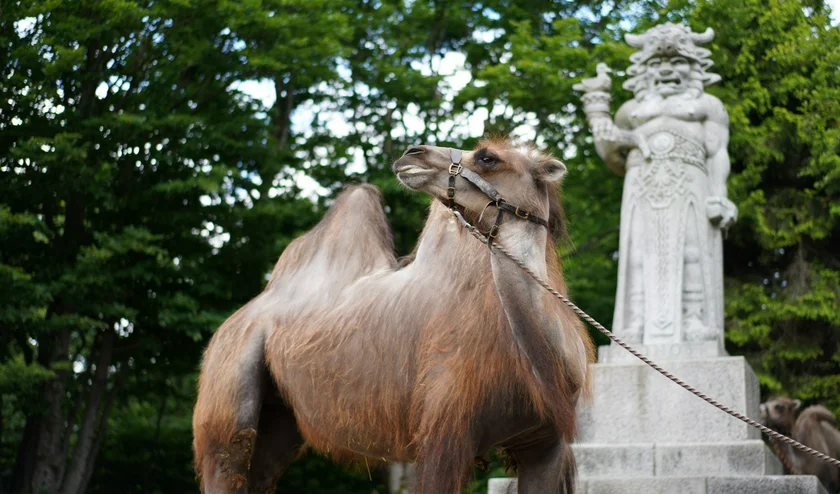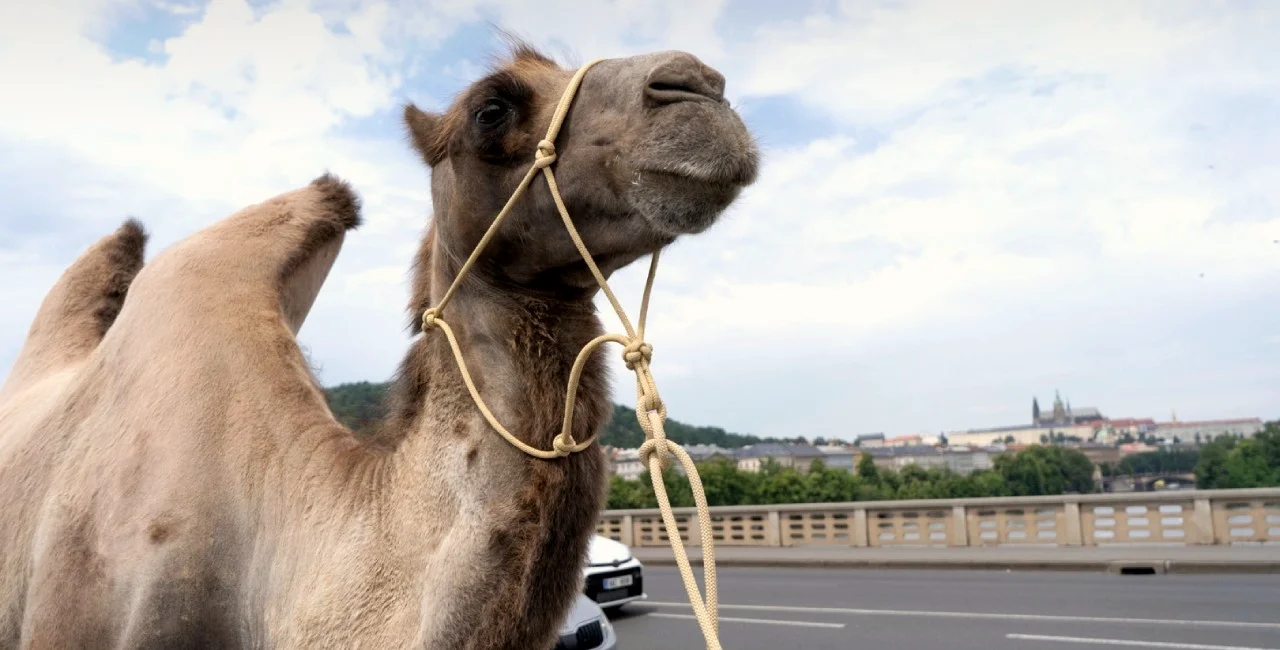Photos of camels on the streets of Prague have lit up social media in recent days, though the reason for their appearance may not be apparent. They're part of a campaign from Czech brewery Radegast that runs through June 26 to highlight water scarcity and drought.
Camels began appearing in Prague, Ostrava, and the forests of Beskydy - Radegast's home in Moravia - on June 17, the World Day to Combat Desertification and Drought. Given the extreme high temperatures across the Czech Republic this weekend, they came at an appropriate time.
"Camels, which are a symbol of drought and desert, show us that water retention and taking care of water resources are extremely important activities," Radegast brand manager Josef Jalůvka states in a press release.

"If we don't all take part in [activities to save on water consumption], we may not only see camels in parades."
Camels are not only symbolic of desert climates, but also of efficient water retention. Camels store fat in their humps and are able to convert it into water, giving them the ability to go extended periods of time without access to water.
During their current campaign, Radegast cooperated with local camel farm Velbloudi.cz to bring camels to the streets of cities across the Czech Republic.
For the campaign that runs through June 26, Radegast will purchase special irrigation bags that help care for public greenery based on how many beers consumers purchase and register through the brewery's website.
The irrigation bags gradually release water into the ground, and retain water over longer periods of time to aid during times of drought. Each bag holds dozens of liters of water, and can be easily moved around a landscape to disperse water where most needed.
"Radegast will provide such irrigation bags free of charge to the driest municipalities in the Czech Republic," says Jalůvka.

"Anyone can help. All you have to do is have a Radegast beer in a pub or a bottle or can to take home from June 17 to 26 and upload a photo of the receipt to our website. The more receipts that arrive, the more irrigation bags Radegast will buy."
While beer is (mostly) made with water, you might be surprised to learn just how much water. According to information provided by Radegast, the average brewery consumes 2.4 liters of water for every liter of beer, while just a handful of Czech breweries consume less than two liters of water per liter of beer.
Radegast, meanwhile, has been able to get that number down to 1.2 liters of water per liter of beer, saving about 40 percent on their water consumption over the past 14 years.
"Caring for the landscape and water resources are issues that we should not take lightly," says Jalůvka.
"Every one of us should take the 'fight for water' personally, because we will only be able to preserve our unique landscape for future generations if we all take on the current challenges now."












 Reading time: 2 minutes
Reading time: 2 minutes 

























